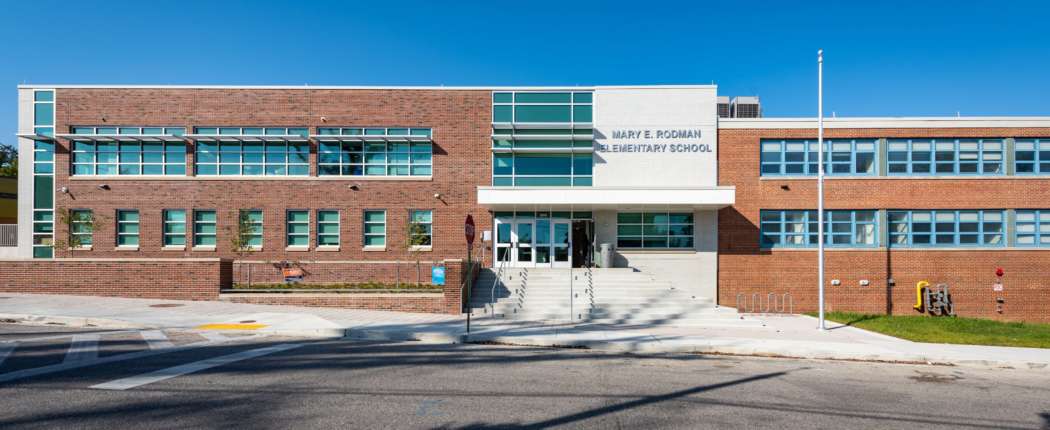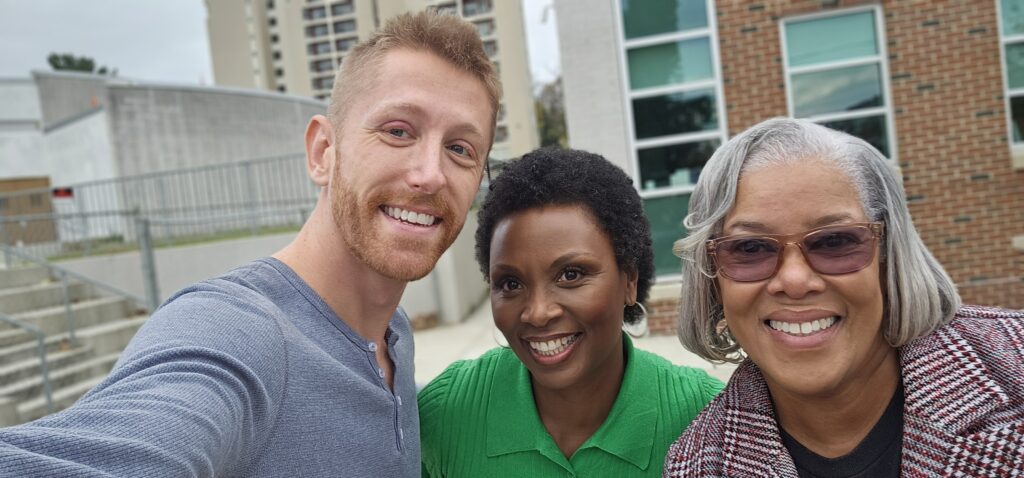Edmondson Village, which takes on the larger identity of its surrounding neighborhoods, including Allendale, Lyndhurst, Edmondson Village, Edgewood, Lower Edmondson Village, Rognel Heights, and Uplands, is a twentieth century neighborhood, built with Baltimore’s basic building block, the rowhouse. Prior to and during the early part of the twentieth century, the area was considered a suburban community comprised of gentlemen country estates, small truck farms, and buildings that served the industry located along the nearby Gwynn’s Falls. Growth began to occur when electric streetcar service began in 1899, and the new bridge was built in 1910. Between 1910 and 1930, Edmondson Village saw its largest growth and increases in population, with much of it occurring in the 1920s. Beginning in 1916, rowhouse developer James Keelty began buying property west of Gwynn’s Falls and north and south of Edmondson Avenue.
In 1926 he acquired the entire Gelston Estate, and in 1928 purchased Lyndhurst. These purchases made up most of the area we know as Edmondson Village. Between the late 1940s and early 1950s, the northern section of the neighborhood was being developed by a handful of developers including Keelty. By the early 1950s Edmondson Village was completely built out one of the nation’s first Colonial Revival style shopping centers complete with quality stores and a movie theatre (the Edmondson Village movie theater, built in 1948).
Until the 1950s, the majority of Edmondson Village was inhabited by white residents. Between 1955 and 1965, the neighborhood changed from being predominantly white to predominately African American, largely the result of “blockbusting” techniques. Through fear tactics, blockbusting forced the original white owners to sell their houses to a real estate developer at a very low cost, and the developer would then sell at exorbitant prices to African Americans. Despite the destabilizing effects of blockbusting, by 1970 Edmondson Village had a higher home ownership rate than most neighborhoods in Baltimore.
The neighborhood developed further with a church, movie theaters, and a shopping center. St. Bernardine’s Roman Catholic Church at 3812 Edmondson Avenue, was built in 1928-1929, the Edgewood movie theater at 3500 Edmondson Avenue was built in 1930, and in 1947 the Edmondson Village Shopping Center was built as one of the nation’s first Colonial Revival style shopping centers complete with quality stores and a movie theatre (the Edmondson Village movie theater, built in 1948).
Until the 1950s, the majority of Edmondson Village was inhabited by white residents. Between 1955 and 1965, the neighborhood changed from being predominantly white to predominately African American, largely the result of “blockbusting” techniques. Through fear tactics, blockbusting forced the original white owners to sell their houses to a real estate developer at a very low cost, and the developer would then sell at exorbitant prices to African Americans. Despite the destabilizing effects of blockbusting, by 1970 Edmondson Village had a higher home ownership rate than most neighborhoods in Baltimore.
The Mary E. Rodman School and the Mary E. Rodman Recreation Center also contribute to, and celebrate, this history. Both the school and the recreation center are named after Mary E. Rodman, a prominent local leader in education for African Americans. In 1889 she graduated from the first class and first public high school for African Americans in Baltimore located at Carrollton and Riggs Avenue. She went on to teach and administer to African Americans before her death in 1937. In 1974, Louis Fry Jr., a prominent African American architect Neighborhood History INSPIRE PLAN Mary E. Rodman Elementary School (13) based out of Washington, D.C. designed the uniquelystyled recreation center. The neighboring communities of Edgewood and Lyndhurst are known for some of Maryland’s most notable leaders including former Baltimore Mayor and Maryland Governor William Donald Schaefer, who grew up in Edgewood, and former U.S. Congressman Elijah Cummings, who attended the nearby Lyndhurst Elementary School. Lyndhurst, renamed the Wildwood Elementary/Middle School, underwent a $30 million dollar renovation in 2017 also through the 21st Century Schools Construction Program.
This community also includes the nearby New Cathedral Cemetery, established in 1869, where Baltimore’s first African American Mayor, Clarence H. “Du” Burns, is buried. To the southeast of the school, located at 125 N. Hilton Street, is another educational facility, the Green Street Academy. Originally built in 1925 as the Gwynns Falls Park High School, it is now a public charter school that serves grades 6 through 12. The school had been closed for several decades but was later modernized and renovated to focus on preparing students for college and other successful careers. Moreover, the renovation of the building over the past ten years earned it a LEED Platinum energy efficiency rating, and the school offers curricular activities that focus on environmental and sustainable practices such as green roof technology that serve as outdoor learning labs.
Most of the Edmondson Village neighborhood meets the Commission for Historical and Architectural Preservation (CHAP) standards for local historic district designation. Due to this neighborhood-wide eligibility, in August of 2016, CHAP voted to nominate Edmondson Village (See map) as a “National Historic District”. Local designation would have regulated all exterior changes to buildings to ensure the character of the neighborhood is preserved. National designation differs slightly, in that while it makes property owners in the district eligible for local, state, and federal historic tax credits for rehabilitation work, it does not require that exterior changes to buildings are regulated.






